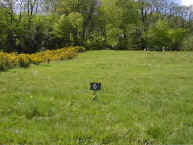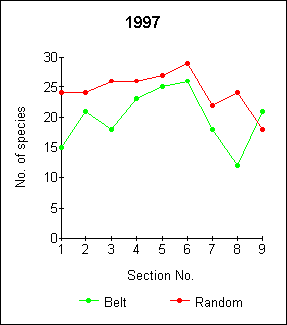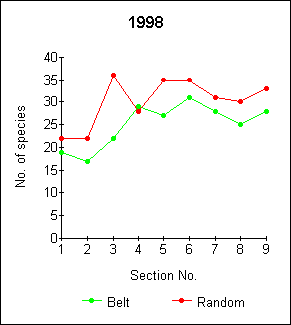The Woodland Education Centre
Heathland Project Report Report Introduction Contents Summary The Effects of Management - Brush cutting
 left:
strip 6 of the Heathland Restoration site. This strip is brushcut three times a
year.
left:
strip 6 of the Heathland Restoration site. This strip is brushcut three times a
year.
c) Frequency
Cutting, whenever it takes place, will have the effect of reducing competition for light and space for a period. This may allow species to establish which otherwise would not be able to compete with the dominant plants. The more frequent the cutting the more this effect will be exaggerated.
Section 6 (picture, above) is cut three times a year, in the spring, summer and autumn. The frequency of cutting has not discouraged Yorkshire Fog, which is still the dominant species in this section (Table), but it does allow more species to become established.
Annual plants obviously require space to be available in order to colonize an area. All plants found on the project site were perennials apart from Common Centaury (Centaurium erythraea), which is an annual. It is significant that section 6 was the only section where this species occurred. Percentage cover of Polytrichum, which carpets areas between other higher plants, was also highest in section 6 in 1998 (Chart).
 |
 |
Species Diversity in 1997 |
Species Diversity in 1998 |
Species diversity figures for 1997 show that section 6 had the highest species diversity of all the sections on the site (Figures above) The trend was similar in 1998, although by this time species diversity had reached a similar level in the control section, section 5, and in section 3, which is brushcut in the autumn (Figs). High species diversity in section 3 was somewhat anomalous, but was due to an increased number of tree, moss and grass species. This is likely to be due to the influence of the woodland on the western boundary. Species diversity is high in the control section (5) because the grasses are prevented from becoming dominant by the Gorse height (up to 2m) in this section.
Continue to the effects of management - grass control| Heathland Restoration Project Report | ||||
Other Lowland Heaths in East Devon
